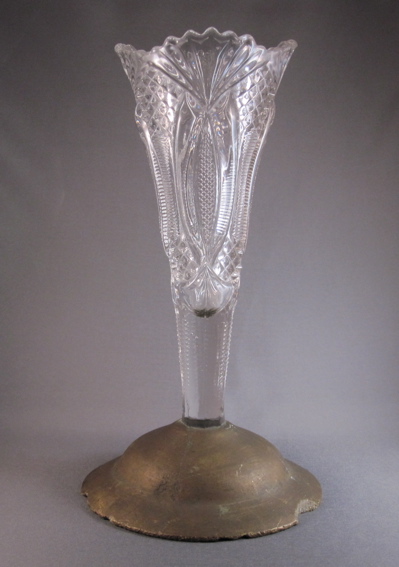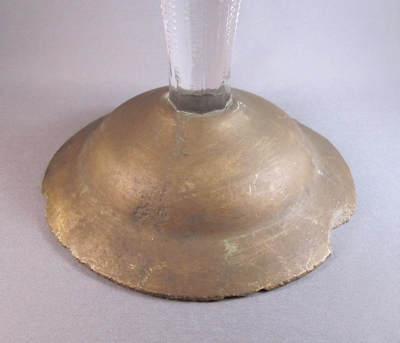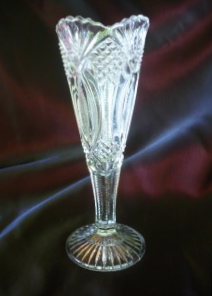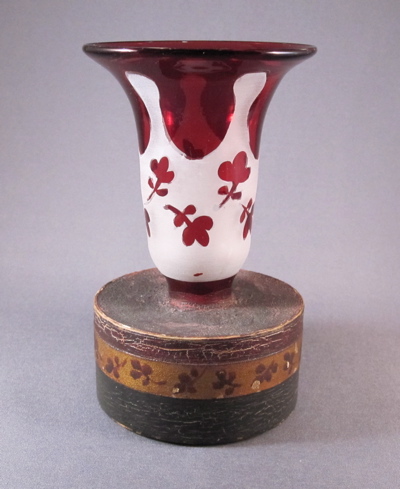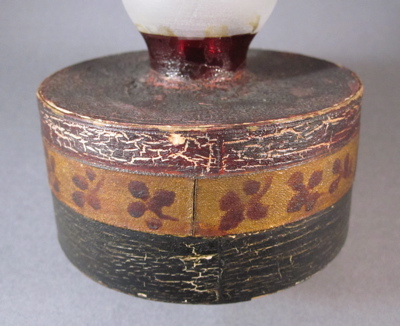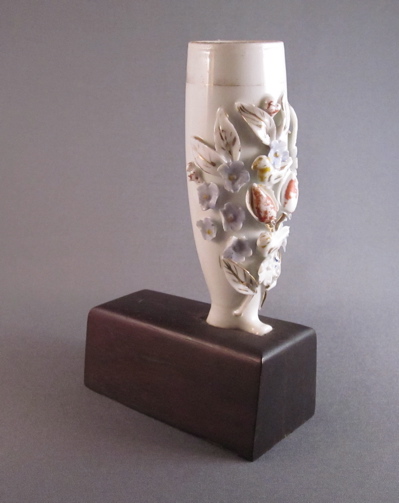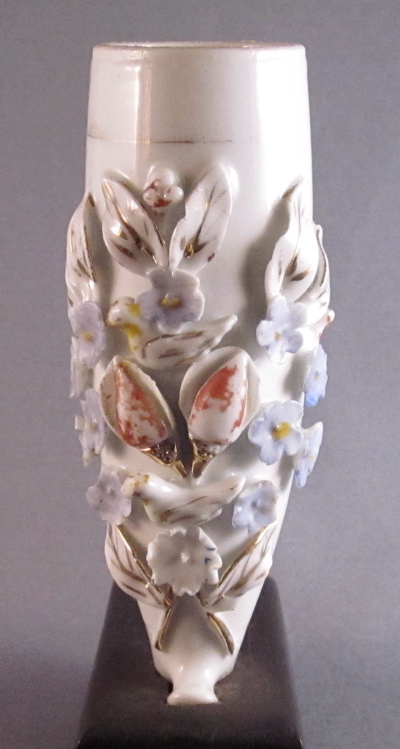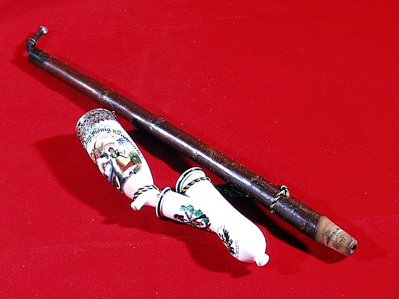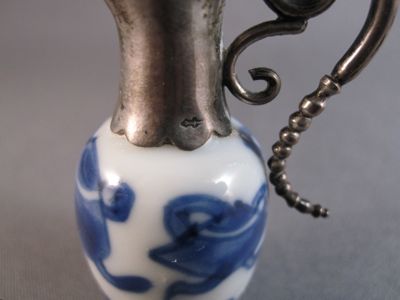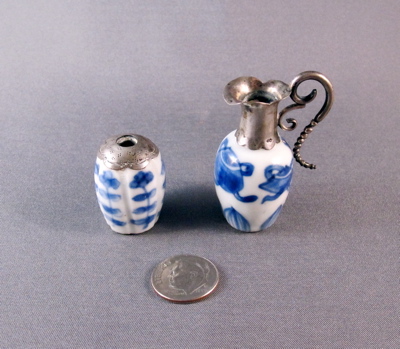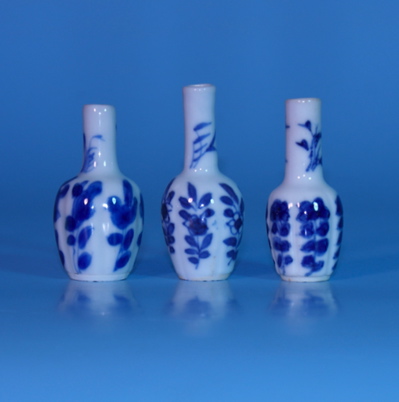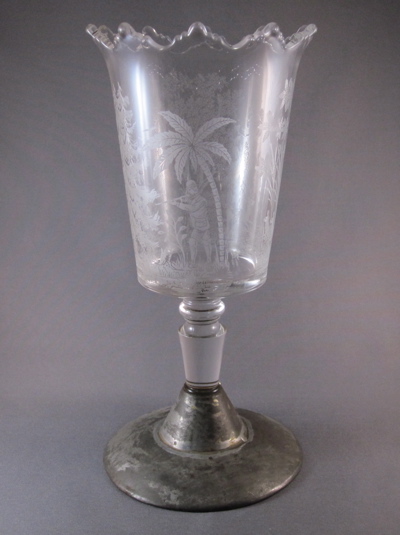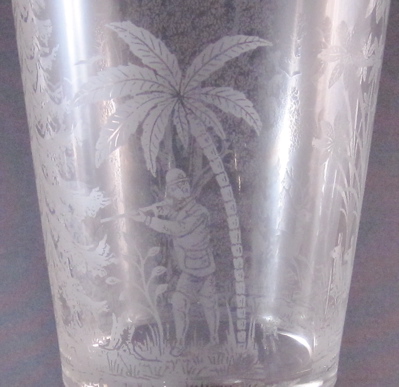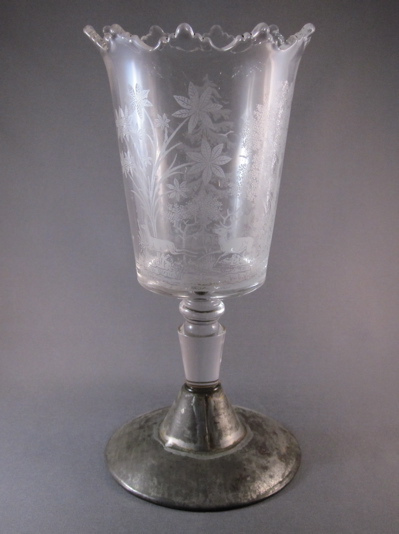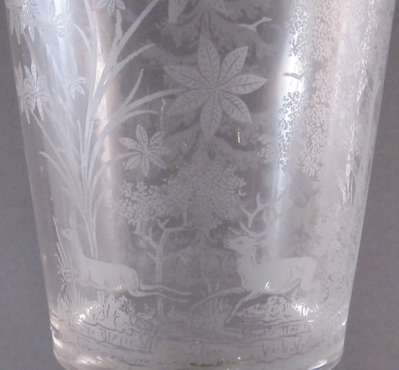I believe this Dutch or German Delft vase to be the earliest piece in my collection. It is made of tin-glazed earthenware and decorated with a blue & white Chinese motif, as were most European ceramic pieces dating from the 17th and 18th centuries
Time has not been kind to this very heavy vase, which stands 10-1/2″ tall, but it must have been cherished by its owners over the past 330 years or so. It has survived the loss of its original base and bears the battle scars of large chips and cracks, restored many years after it was first made
It now stands on a wobbly, cracked wooden base, painted blue and white to match the body of the vase. Unfortunately, the painted surface has become unstable, flaking each time the vase is touched





